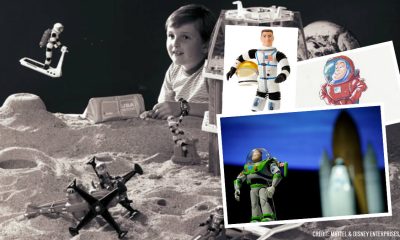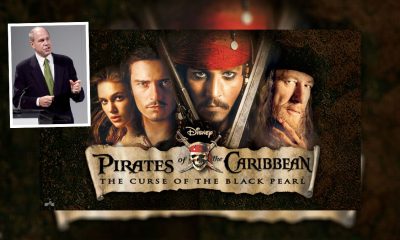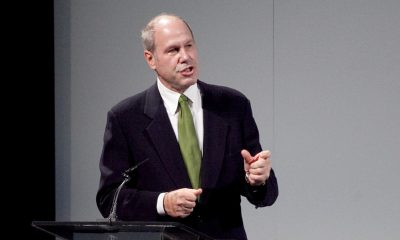Theme Parks & Themed Entertainment
The Road to Cars Land – Part One

It’s the early 2000s. Things are starting to get spikey between Michael Eisner and Steve Jobs in regards to Pixar Animation Studios.
These two titans of industry are trying to hammer out a third extension of that animation studio’s production & distribution deal with the Mouse House. Their original three picture deal had been signed back in March of 1991, and then – following the enormous success of “Toy Story” in November of 1995 – was then been renegotiated & turned into a 5-picture co-production deal in February of 1997.
As far as Steve Jobs was concerned, Pixar was now within inches of meeting its contractual obligation to Disney. Which meant that was now time for these two studios to hammer out a new deal. One that would be far more lucrative for Pixar. After all, the folks up in Emeryville (They’d only just moved from Pixar’s original studio set-up in Port Richmond over to Emeryville in 2000) had already delivered six films for Disney to distribute:
- “Toy Story” (1995)
- “A Bug’s Life” (1998)
- “Toy Story 2” (1999)
- “Monsters, Inc. (2001)
- “Finding Nemo” (2003)
- “The Incredibles” (2004)
“Toy Story” & “Toy Story 2” Don’t Count – Pixar’s Original Film Obligation to Disney
Not so fast, says Disney’s lawyers. “Toy Story” was produced outside of that 5 picture co-production deal that was signed back in February in 1997. So it then couldn’t be counted as one of the five films that Pixar was contractually obligated to deliver to Disney.
More to the point, because “Toy Story 2” was a sequel to the original “Toy Story” movie from 1995 (and was originally supposed to be a Disney Home Premiere, rather than a theatrical release. Disney only decided that “Toy Story 2” would be released to theaters a year or so out from completion of that production. Which caused an awful lot of angst up in Emeryville) … Well, that film also couldn’t be counted towards those 5 co-productions that Pixar was now contractually obligated to deliver to Disney.
Which made Steve Jobs furious.
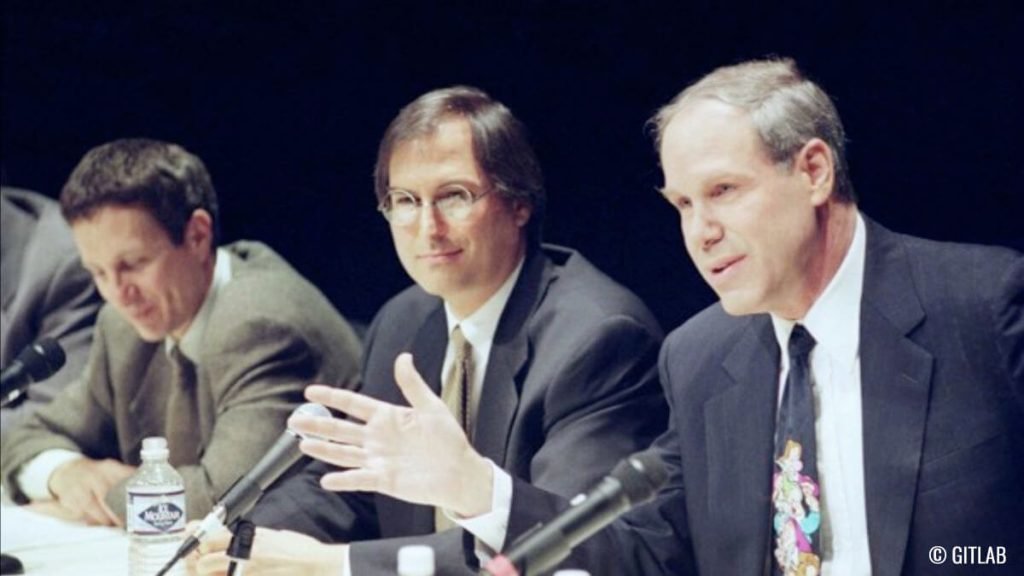
Steve Jobs had every right to be angry – given how many movie tickets had been sold to “Toy Story” & “Toy Story 2” (the first film in this series earned $244 million at the worldwide box office. While the second film in this series effectively doubled the first “Toy Story” ‘s box office take, pulling in $487 million at the worldwide box office), it just made Jobs crazy that a film franchise which had already pull in three quarters of a billion dollars at the worldwide box office didn’t count towards Pixar’s 5 picture co-production deal. Never mind the hundreds of millions of merchandising-related dollars that Disney had also pulled in from the sales of “Toy Story” -related toys.
Anyway … As far as Disney was concerned, factoring in the whole the-first-“Toy-Story”-doesn’t-count-towards-that-five-picture-deal-because-it-was-produced-before-this-co-production-deal-was-signed and “Toy-Story-2”-doesn’t-count-towards-that-five-picture-co-production-deal-either-because-it’s-a-sequel-to-the-original-“Toy-Story” thing … Well, Disney’s lawyers insisted that – to date – Pixar had only delivered four of the five movies it was under contract to deliver to the Mouse House.
- “A Bug’s Life” (1998)
- “Monsters, Inc. (2001)
- “Finding Nemo” (2003)
- “The Incredibles” (2004)
Early Talks of “Toy Story 3” – Will It Count ?!
Now where this gets interesting is that – in the middle of this negotiation in the early 2000s – Pixar actually approached Disney with an idea for “Toy Story 3.” Which they then wanted to produce as the fifth and final film Pixar was contractually obligated to deliver to Disney as part of that co-production deal they’d signed with the Mouse House back in February of 1997.
Now remember that the first two “Toy Story” movies had already earned three quarters of a billion at the worldwide box office. So it was a gimme that a third “Toy Story” film would sell lots & lots of movie tickets as well. Not to mention all of the fees that Disney would collect from toy manufacturers for those officially licensed “Toy Story” toys.
And – just in case you’re wondering – Disney wasn’t wrong. When “Toy Story 3” was finally released to theaters in June of 2010, it would go on to earn over a billion dollars at the worldwide box office all by itself. Never mind about all of the officially licensed toy money.
But here’s the thing: Pixar will only make “Toy Story 3” IF Disney agrees that this sequel then counts as the fifth and final film that this Emeryville-based operation is still under contract to deliver to the Mouse House. And Michael Eisner – when he hears about this – digs in his heels and says “You know that’s not the deal. Sequels don’t count towards your 5-picture contractual obligation to us. If you opt to produce ‘Toy Story 3,’ you’re still going to need to deliver another movie to Disney after that in order to honor the terms of that contract.”
Which makes Jobs furious. Here he was offering Disney yet another sequel to “Toy Story” that – as I mentioned earlier – would eventually go on to earn over a billion dollars at the worldwide box office … And here was Michael Eisner saying “Nope. That doesn’t count towards completion of our 5-picture co-production deal. You’re still going to owe us another movie after you deliver ‘Toy Story 3.’ “
Which is when Jobs decides to play hardball. He says “Okay then. No ‘Toy Story 3.’ “
To which Eisner responds “Okay then. No ‘Toy Story 3.’ Let’s make that cars movie instead.”
“The Yellow Car” – Origin Story to “Cars”
Which now brings us to “Cars.” Or – as this proposed animated feature was known back then (when work first began on the development of this Pixar project back in 1998) – “The Yellow Car.” Now – given what’s going on in California right now (You did see where that State is looking to ban the sales of new gasoline-powered cars and light trucks by 2035?) – the original storyline that Pixar had put together for “The Yellow Car” was kind of interesting. It dealt with a tiny little electric car – which had just arrived from overseas – trying to make a new life for itself in the American southwest. Where it was then surrounded by all of these gas-guzzling 4-wheelers and long-haul trucks.
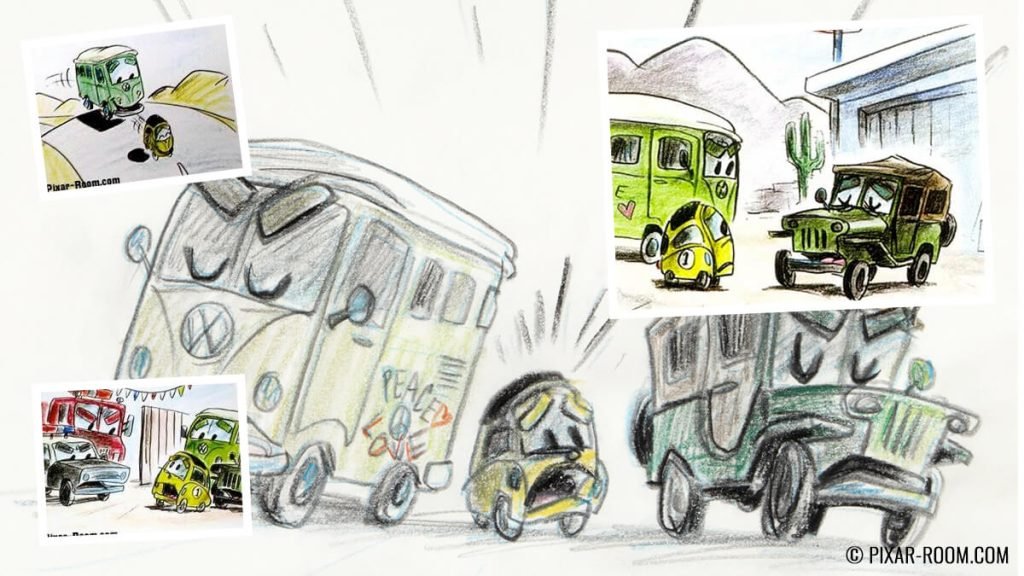
That storyline might have had a chance today. But back in the late 1990s / early 2000s, the story notes that Disney kept sending Pixar were more along the lines of “Is there any way we can change that scrappy immigrant into … Say, a young race car who’s on the cusp of his first big professional win?”
And that note reportedly came from Michael Eisner himself. Who – even though he had said “No” to Pixar making “Toy Story 3” because of that whole contractual-obligation thing – still thought that he had a huge winner for Disney in “Cars.” And that was because – back in the late 1960s – Michael had had a front row seat when Mattel’s Hot Wheels first arrived on the scene.
Michael Eisner & Hot Wheels
You gotta remember that Michael Eisner started out in television. To be specific, he had two brief stints at NBC & CBS in the mid-1960s before he then got hired ABC. Where – in 1968 — Eisner was named that network’s director of program development for the East Coast. Which meant that Michael was then largely responsible for what aired on ABC on Saturday morning.
And around this very same time (May of 1968), Mattel introduced Hot Wheels. Which was this new toy line of scale model cars. The first 16 Hot Wheels hit the market that year and were supported by this massive television advertising campaign (with the bulk of that commercial time which was supposed to support the launch of this new toy line — of course — being purchased on shows that would air on Saturday mornings. Which is when kids would be guaranteed to be watching TV).
So taking into account where Michael Eisner was working at that time, he was obviously keenly aware of what an enormous success the “Hot Wheels” toy line had been for Mattel. So – some 35 years later – when Pixar effectively told Eisner “You can’t have ‘Toy Story 3.’ You’ll now have to settle for ‘The Yellow Car’ instead,” Michael’s response was “Okay. Disney will temporarily shut down its ‘Toy Story’ gold mine and now go and open a ‘Cars’ -themed platinum mine instead.”
Now please note that I used the word “temporarily” there. That was because Disney’s lawyers believed that they owned the Pixar-produced characters from the original agreement.
Pixar Breaks Away from Disney – Disney Creates Circle 7 Studios
In January of 2004 – Steve Jobs announced that he was breaking off negotiations with The Walt Disney Company and upon delivery of “Cars” – which would be released to theaters in June of 2006 – Pixar was finally free & clear of its obligations to the Mouse House. Which is why they now open negotiations with other studios in Hollywood seeking a new production / distribution partner.
Once Pixar formally broke off negotiations with Disney, The Walt Disney Company announced that it would be starting Circle 7 Studios (named for the street that this brand-new animation studio was located on. Which is Circle 7 Drive in Glendale, CA. Which is where KABC, the Los Angeles-based ABC affiliate is located. “And what is the KABC logo?,” you ask. A 7 – for Channel 7 – with a circle around it)
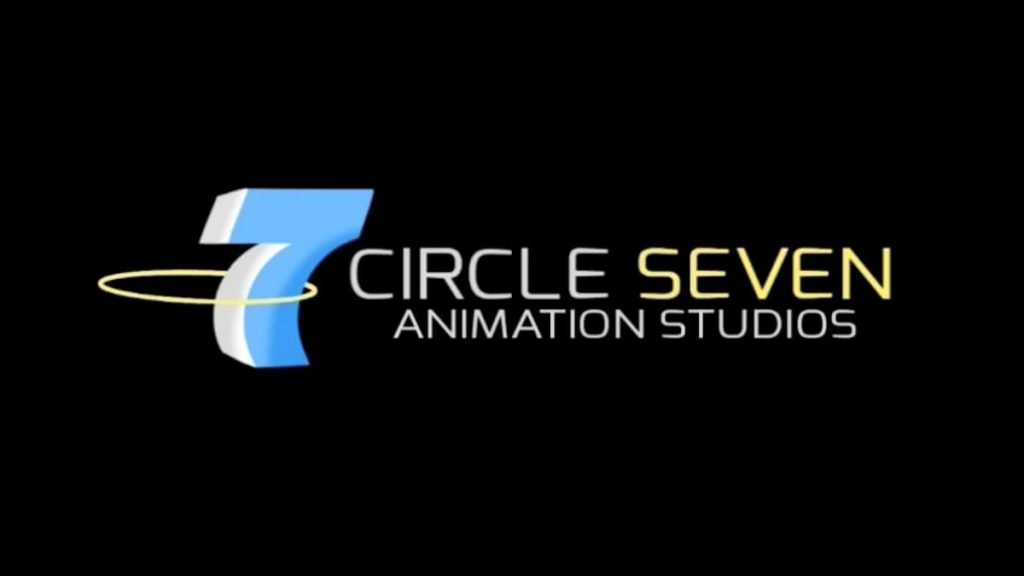
… And at Circle 7 Studios, Disney intended to produce its own sequels to “Toy Story,” “Monsters, Inc.” and “Finding Nemo.” Because – under the terms of those production & distribution deals, later co-production deals that Pixar had signed with Disney back in 1991 and then 1997 respectively – the Mouse felt that they owned this Pixar-produced characters & storylines outright and could then do whatever they wanted with them.
That whole Circle 7 Studios was a nightmare for the folks at Pixar. Though – it’s worth noting here – the people at Disney who did work on those “Toy Story,” “Monsters, Inc.” and “Finding Nemo” sequels did do some decent work.
Original “Toy Story 3” Plot
The storyline for Disney’s version of “Toy Story 3” (which had Buzz Lightyear getting recalled to the factory that originally made him in Japan, and then the Andy’s Room gang shipping themselves via FedEx to that very same factory in an effort to save Buzz from being dismantled) had its charms.
“Monsters, Inc.” Sequel – “Lost in Scaradice”
I’d argue that the storyline for Disney’s version of “Monsters, Inc.” (which was to have been entitled “Lost in Scaradice”) would have made for a far better film than the one that Pixar themselves produced in June of 2013. Which was “Monsters University.”
But we’re not here to talk about “Lost in Scaradice.” We’re here to talk about “Cars.”
“Cars” – Michael Eisner’s Decision Creates Billions with New Franchise
“Cars” finally got released to theaters in June of 2006 and then went on earn $461 million at the worldwide box office.
Which – admittedly – wasn’t the over-a-billion that “Toy Story 3” would earn at the worldwide box office just four years later in June of 2010. But then when you factor in the $11 BILLION in sales of officially licensed “Cars” toys (And that was just in the first two years after “Cars” was released to theaters) … Well, like I said earlier, Disney had just temporarily traded its “Toy Story” -themed gold mine for a “Cars” -themed platinum mine.
Important to stress here: Michael Eisner’s “Hot Wheels” -related hunch proved to be correct. Him deciding to make Pixar produce “Cars” rather than opting to greenlight production of Toy Story 3” created a whole new, extremely lucrative franchise for The Walt Disney Company. Which is paying off even today.
For example, Over on Disney+ the very day that this Bandcamp Exclusive show went live (September 8, 2022), a brand new original animated series – “Cars on the Road” – starring Mater & Lightning McQueen debuts. Nine episode detailing what happens on a road trip when Lightning & Mater drive back East to attend Mater’s sister’s wedding. Can’t wait to see what Mater’s sister looks like.
Bob Iger Helps Disney Reclaim Pixar
Eisner doesn’t often get credit for the success of cars. But that’s largely because Michael Eisner is no longer the CEO of The Walt Disney Company. He stepped down in September of 2005. Now Bob Iger is called the shots at the Mouse House. And he’s determined to do whatever he has to in order to repair the Company’s working relationship with Pixar. Up to & including buying that animation studio in January of 2006 for $7.4 billion and then making Steve Jobs the Company’s largest individual shareholder. For a time, Steve owned 7% of that Company.
And when you lay out that kind of cash … Well, of course, you’re looking for a quick return on your investment. Which is Iger then turned to the Imagineers and said “I want a lot of Pixar-related stuff in the Disney Parks as quickly as possible.”
“Cars” Attractions in Disney Parks
And the Imagineers took the orders they were getting from Disney’s new CEO very seriously. Which is why – a year to the day after “Cars” first opened in theaters (June 9, 2006) – Cars Race Rally opened at Walt Disney Studios Park at Disneyland Paris (on June 9, 2007).
Cars Race Rally at Walt Disney Studios Park in Disneyland Paris
Mind you, Cars Race Rally wasn’t the most elaborate or ambitious attraction to ever be installed at a Disney theme park. Located in the Toon Studios section of Walt Disney Studios Park, this flat ride was a reimagining of Zamperla’s Demolition Derby. Only in this case, this ride’s vehicles that have been rethemed to look as though they were part of the ”Cars” universe.
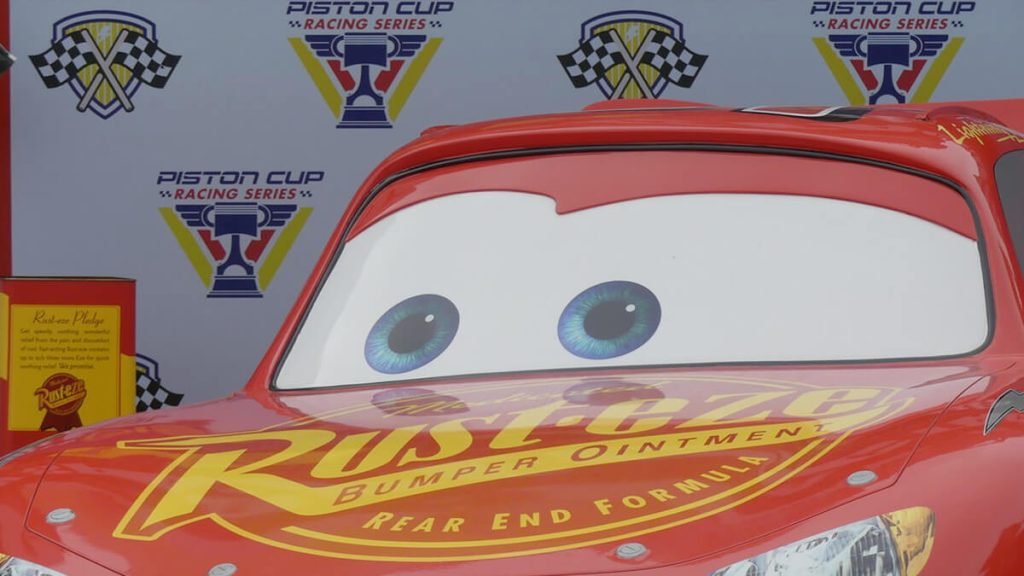
Radiator Springs Announcement for Disney California Adventure
But just four months after Cars Race Rally would open at Walt Disney Studios Park in Disneyland Paris (on October 17, 2007, to be exact), The Walt Disney Company announced its $1.1 billion redo of Disney California Adventure. This 5-year-long project be capped off by the creation of a 12-acre area that would basically recreate Radiator Springs in all its glory at the very center of this theme park. Which – it was hoped – would then give Southern Californians a compelling new reason to go visit the Disneyland Resort’s second gate.
Mind you, the irony here is – if you look back at the original plans for Disney’s California Adventure (back when this theme park was first announced back in July of 1996), Disneyland’s second gate was supposed to have had an area that celebrated California Car Culture. A place that would have allowed DCA visitors to experience firsthand street racing or the joy of cruising along Route 66 or just the fun of sitting in a classic car from the 1950s outside of a neon-laden drive-in restaurant. Where you could then have had your fast food order brought right to your vehicle by a car hop who was wearing roller skates.

Sounds like fun, doesn’t it? So how did we go from an area at DCA that was supposed to have celebrated California’s car culture to a land that then recreated Radiator Springs from Pixar’s original “Cars” movie? We’ll get to that on the second installment of this new Bandcamp Exclusive series, “The Road to Cars Land.”
Theme Parks & Themed Entertainment
Disney and Macy’s 90-Year Thanksgiving Day Parade Partnership: From Mickey’s First Balloon to Minnie’s Big Debut
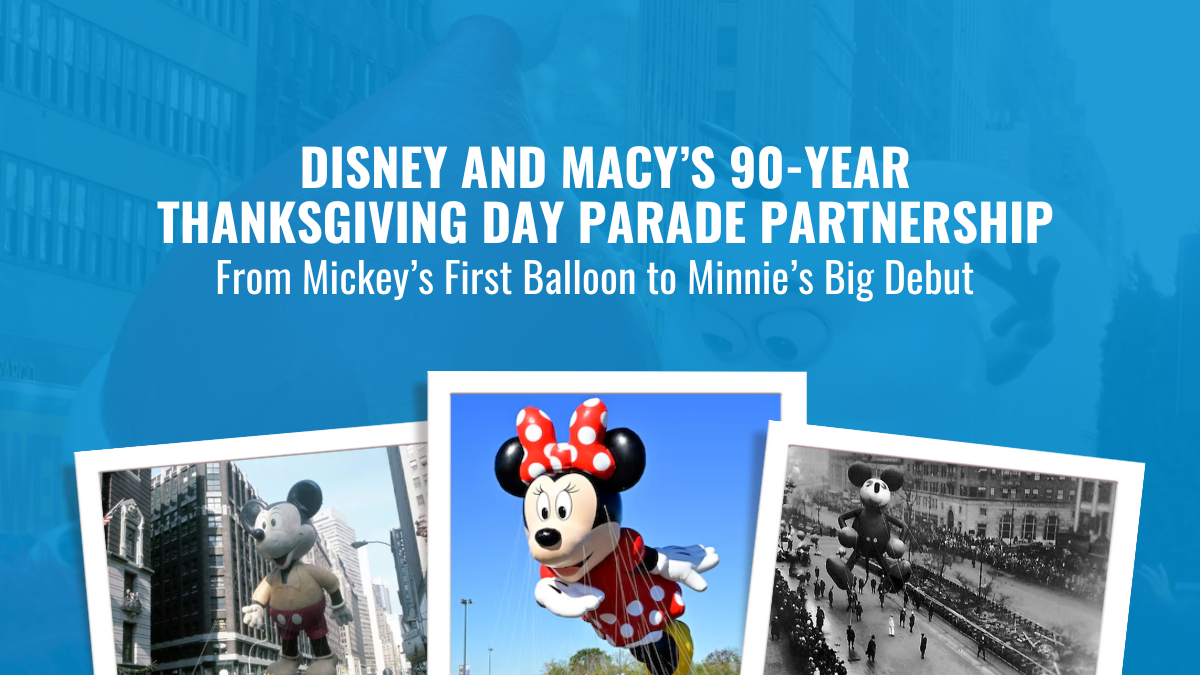
Now, folks, if you’re like me, Thanksgiving just wouldn’t be the same without a coffee, a cozy seat, and Macy’s Thanksgiving Day Parade on the TV. And if you’re really like me, you’re watching for one thing: Disney balloons floating down 34th Street. Ever wondered how Mickey, Donald, and soon Minnie Mouse found their way into this beloved New York tradition? Well, grab your popcorn because we’re diving into nearly 90 years of Disney’s partnership with Macy’s.
The Very First Parade and the Early Days of Balloons
The Macy’s Thanksgiving Day Parade goes way back to 1924, but if you can believe it, balloons weren’t part of the festivities until 1927. That first lineup included Felix the Cat, a dragon, and a toy soldier, all towering above the crowds. Back then, Macy’s had a pretty wild idea to end the parade: they would let the balloons drift off into the sky, free as birds. But this wasn’t just Macy’s feeling generous. Each balloon had a message attached, offering a $100 reward (about $1,800 in today’s dollars) for anyone who returned it to the flagship store on 34th Street.
And here’s where it gets interesting. This tradition carried on for a few years, right up until 1932, when Felix the Cat almost took down a plane flying over New York City! Imagine that—you’re flying into LaGuardia, and suddenly, there’s a 60-foot balloon drifting toward your wing. Needless to say, that was the end of Macy’s “fly away” stunt, and from then on, the balloons have stayed firmly grounded after the parade ends.
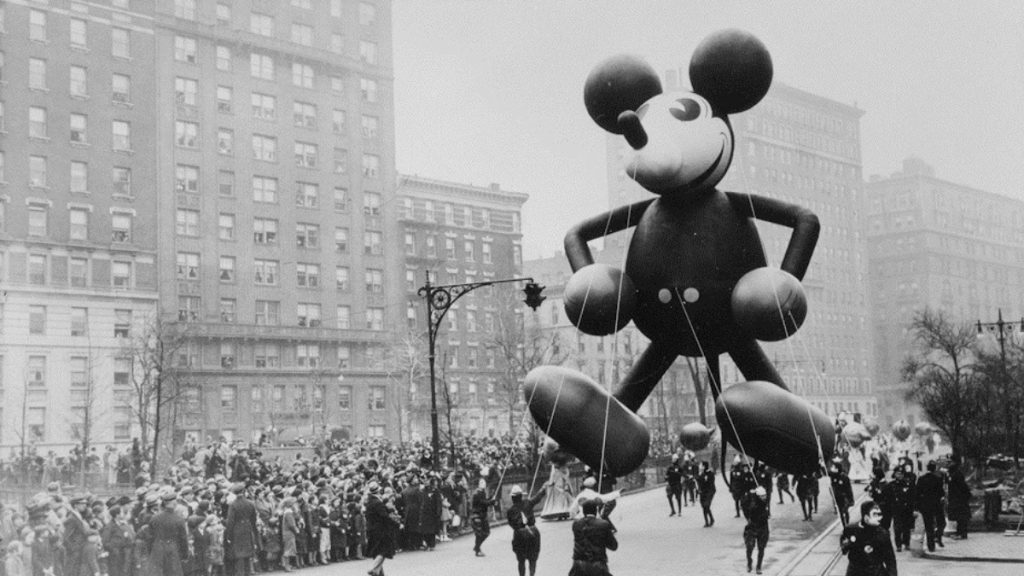
1934: Mickey Mouse Floats In, and Disney Joins the Parade
It was 1934 when Mickey Mouse finally made his grand debut in the Macy’s parade. Rumor has it Walt Disney himself collaborated with Macy’s on the design, and by today’s standards, that first Mickey balloon was a bit of a rough cut. This early Mickey had a hotdog-shaped body, and those oversized ears gave him a slightly lopsided look. But no one seemed to mind. Mickey was there, larger than life, floating down the streets of New York, and the crowd loved him.
Mickey wasn’t alone that year. He was joined by Pluto, Horace Horsecollar, and even the Big Bad Wolf and Practical Pig from The Three Little Pigs, making it a full Disney lineup for the first time. Back then, Disney wasn’t yet the entertainment powerhouse we know today, so for Walt, getting these characters in the parade meant making a deal. Macy’s required its star logo to be featured on each Disney balloon—a small concession that set the stage for Disney’s long-standing presence in the parade.
Duck Joins and Towers Over Mickey
A year later, in 1935, Macy’s introduced Donald Duck to the lineup, and here’s where things got interesting. Mickey may have been the first Disney character to float through the parade, but Donald made a huge splash—literally. His balloon was an enormous 60 feet tall and 65 feet long, towering over Mickey’s 40-foot frame. Donald quickly became a fan favorite, appearing in the lineup for several years before being retired.
Fast-forward a few decades, and Donald was back for a special appearance in 1984 to celebrate his 50th birthday. Macy’s dug the balloon out of storage, re-inflated it, and sent Donald down 34th Street once again, bringing a bit of nostalgia to the holiday crowd.
A Somber Parade in 2001
Now, one of my most memorable trips to the parade was in 2001, just weeks after the 9/11 attacks. Nancy and I, along with our friends, headed down to New York, and the mood was something I’ll never forget. We watched the start of the parade from Central Park West, but before that, we went to the Museum of Natural History the night before to see the balloons being inflated. They were covered in massive cargo nets, with sandbags holding them down. It’s surreal to see these enormous balloons anchored down before they’re set free.
That year, security was intense, with police lining the streets, and then-Mayor Rudy Giuliani rode on the Big Apple float to roaring applause. People cheered his name, waving and shouting as he passed. It felt like the entire city had turned out to show their resilience. Even amidst all the heightened security and tension, seeing those balloons—brought a bit of joy back to the city.
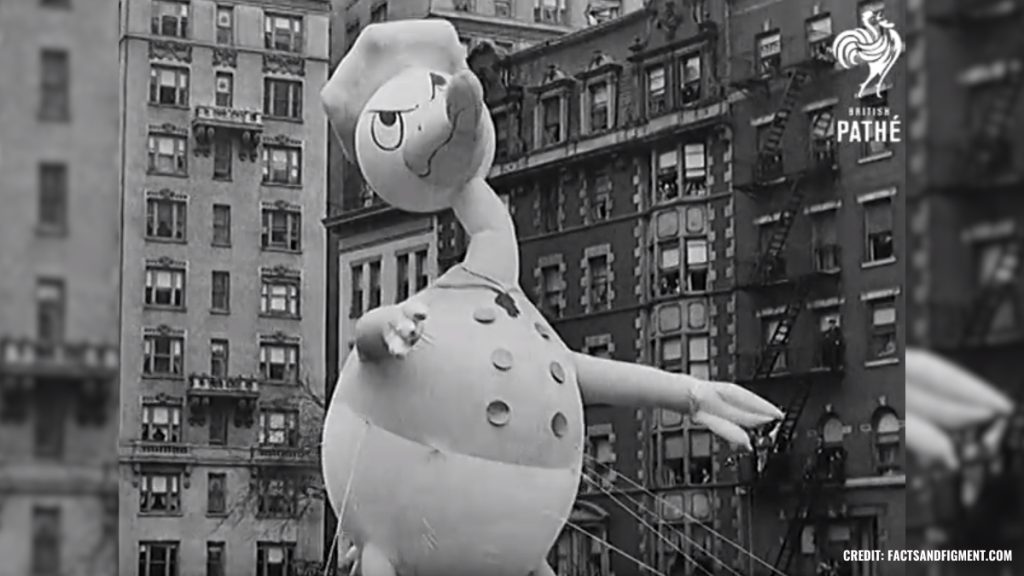
Balloon Prep: From New Jersey’s MetLife Stadium to California’s D23 Expo
Each year before the parade, Macy’s holds a rehearsal event known as Balloon Fest at MetLife Stadium in New Jersey. This is where handlers get their first crack at guiding the balloons, practicing with their parade masters, and learning the ropes—literally. It’s an entire production unto itself, with dozens of people rehearsing to make sure these enormous inflatables glide smoothly down the streets of New York on parade day.
In 2015, Macy’s took the balloon show on the road, bringing their Buzz Lightyear balloon out to California for the D23 Expo. I was lucky enough to be there, and watching Buzz get inflated piece by piece in the Anaheim Convention Center parking lot was something to behold. Each section was filled with helium in stages, and when they got around to Buzz’s lower half, well, there were more than a few gas-related jokes from the crowd.
These balloons seem to have a personality all their own, and seeing one like Buzz come to life up close—even outside of New York—had all the excitement and anticipation of the real deal.
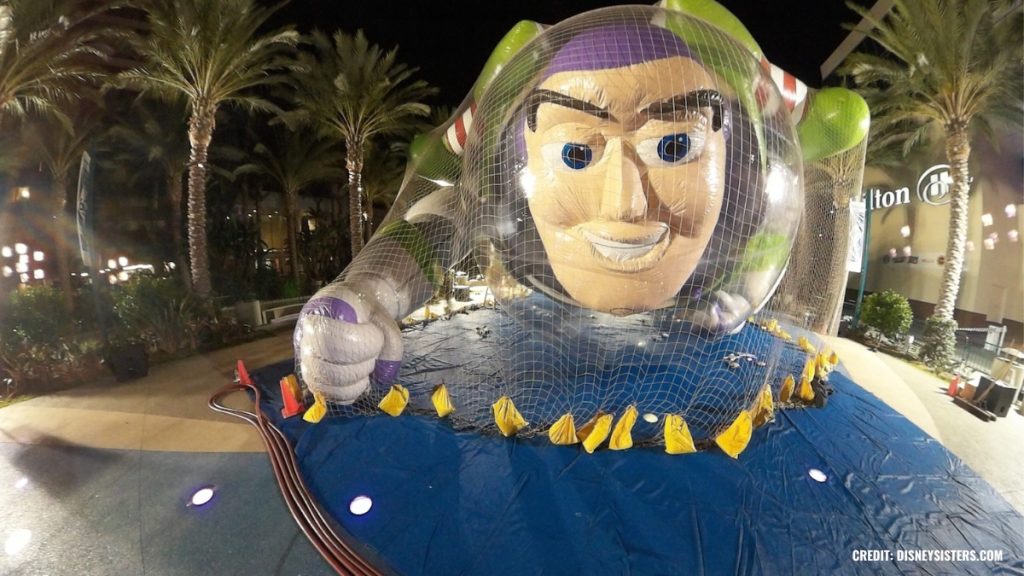
Mickey’s Comeback as a Bandleader and Sailor Mickey
After a long hiatus, Mickey Mouse made his return to the Macy’s parade in 2000, this time sporting a new bandleader outfit. Nine years later, in 2009, Sailor Mickey joined the lineup, promoting Disney Cruise Line with a nautical twist. Over the past two decades, Disney has continued to enchant parade-goers with characters like Buzz Lightyear in 2008 and Olaf from Frozen in 2017. These balloons keep Disney’s iconic characters front and center, drawing in both longtime fans and new viewers.
But ever wonder what happens to the balloons after they reach the end of 34th Street? They don’t just disappear. Each balloon is carefully deflated, rolled up like a massive piece of laundry, and packed into storage bins. From there, they’re carted back through the Lincoln Tunnel to Macy’s Parade Studio in New Jersey, where they await their next flight.

Macy’s Disney Celebration at Hollywood Studios
In 1992, Macy’s took the spirit of the parade down to Disney-MGM Studios in Orlando. After that year’s parade, several balloons—including Santa Goofy, Kermit the Frog, and Betty Boop—were transported to Hollywood Studios, re-inflated, and anchored along New York Street as part of a holiday display. Visitors could walk through this “Macy’s New York Christmas” setup and see the balloons up close, right in the middle of the park. While this display only ran for one season, it paved the way for the Osborne Family Spectacle of Dancing Lights, which became a holiday staple at the park for years to come.
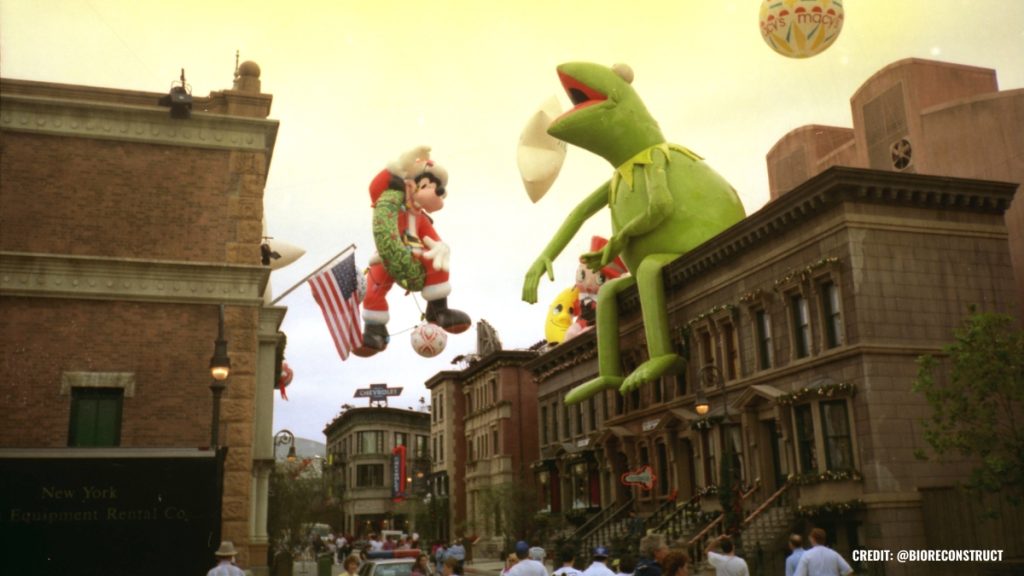
Minnie Mouse’s Long-Awaited Debut in 2024
This year, Minnie Mouse will finally join the parade, making her long-overdue debut. Macy’s is rolling out the red carpet for Minnie’s arrival with special pop-up shops across the country, where fans can find exclusive Minnie ears, blown-glass ornaments, T-shirts, and more to celebrate her first appearance in the Thanksgiving Day Parade.
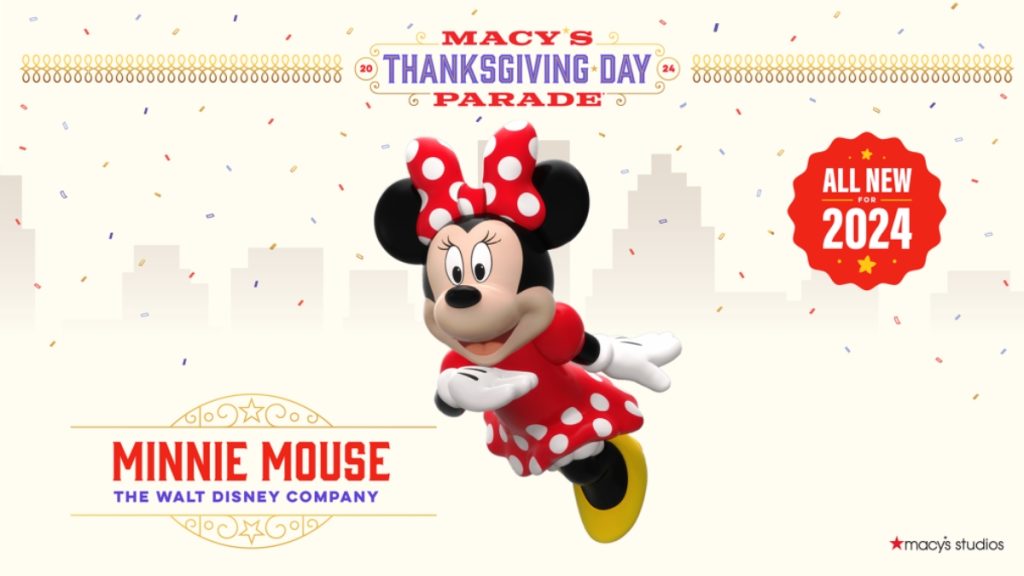
For those lucky enough to catch the parade this year, you’ll see Minnie take her first float down 34th Street, decked out in her iconic red bow and polka-dot dress. Macy’s and Disney are also unveiling a new Disney Cruise Line float honoring all eight ships, including the latest, the Disney Treasure.
As always, I’ll be watching from my favorite chair, coffee in hand, as Minnie makes her grand entrance. The 98th annual Macy’s Thanksgiving Day Parade airs live on NBC, and it’s a tradition you won’t want to miss—whether you’re on 34th Street or tuning in from home.
Theme Parks & Themed Entertainment
Disney’s Forgotten Halloween Event: The Original Little Monsters on Main Street
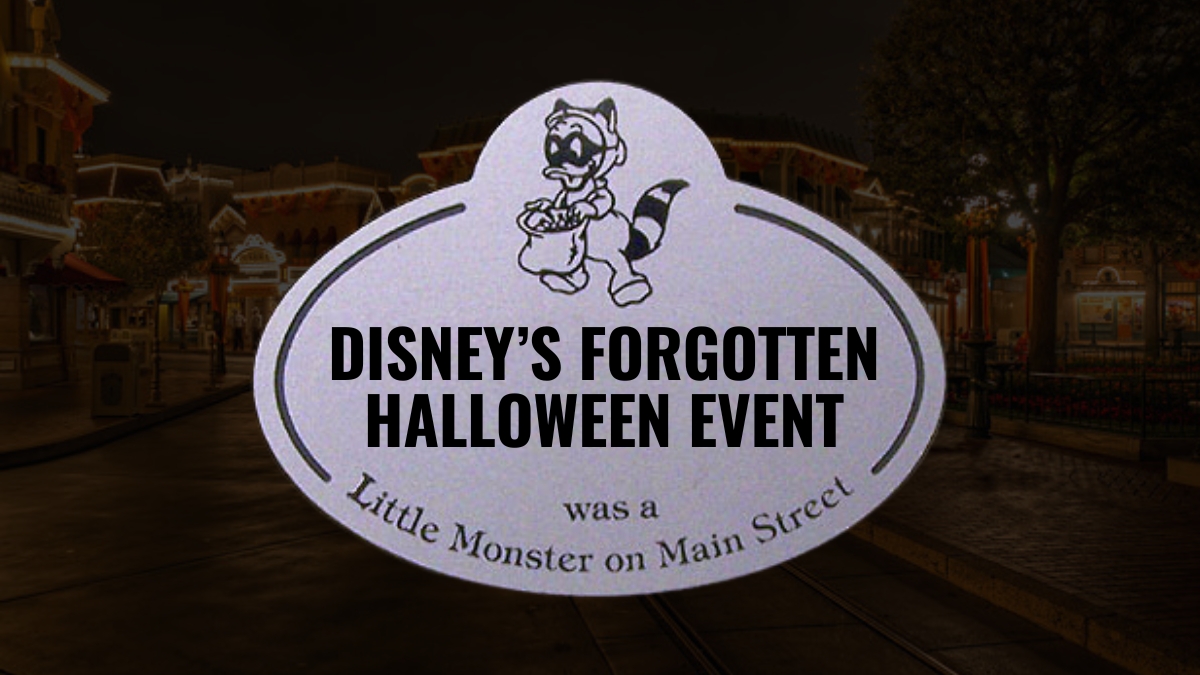
When most Disney fans think of Halloween in the parks, they immediately picture Mickey’s Not-So-Scary Halloween Party at Walt Disney World or the Oogie Boogie Bash at Disneyland Resort. But before those events took over as the must-attend spooky celebrations, there was a little-known event at Disneyland called Little Monsters on Main Street. And its origins? Well, they go all the way back to the 1980s, during a time when America was gripped by fear—the Satanic Panic.
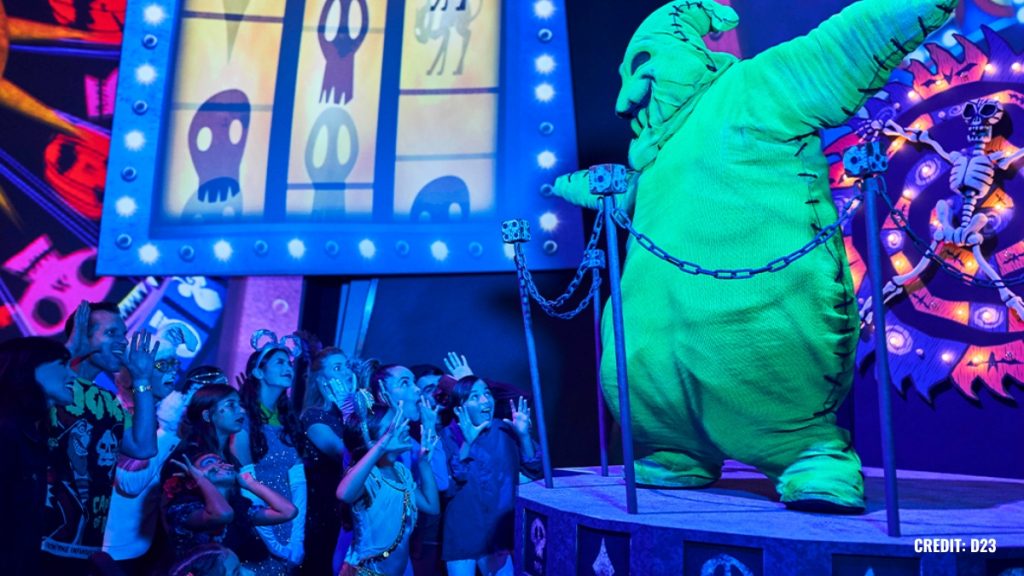
You see, back in the mid-1980s, parents were terrified that Halloween had become dangerous. Urban legends about drug-laced candy or razor blades hidden in apples were widespread, and many parents felt they couldn’t let their kids out of sight for even a moment. Halloween, which was once a carefree evening of trick-or-treating in the neighborhood, had suddenly become a night filled with anxiety.
This is where Disneyland’s Little Monsters on Main Street came in.
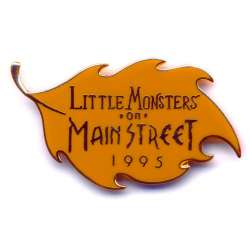
The Origins of Little Monsters on Main Street
Back in 1989, the Disneyland Community Action Team—later known as the VoluntEARS—decided to create a safe, nostalgic Halloween experience for Cast Members and their families. Many schools in the Anaheim area were struggling to provide basic school supplies to students, and the VoluntEARS saw an opportunity to combine a safe Halloween with a charitable cause. Thus, Little Monsters on Main Street was born.
This event was not open to the general public. Only Disneyland Cast Members could purchase tickets, which were initially priced at just $5 each. Cast Members could bring their kids—but only as many as were listed as dependents with HR. And even then, the park put a cap on attendance: the first event was limited to just 1,000 children.
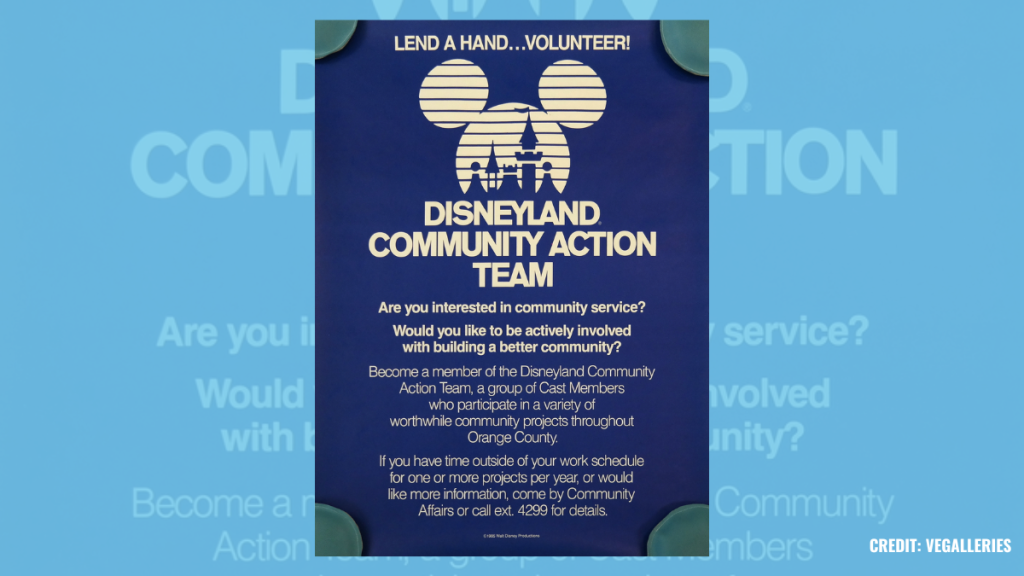
A Unique Halloween Experience
Little Monsters on Main Street wasn’t just another Halloween party. It was designed to give kids a safe, fun environment to enjoy trick-or-treating, much like the good old days. On Halloween night in 1989, kids in costume wandered through Disneyland with their pillowcases, visiting 20 different trick-or-treat stations. They also had the chance to ride a few of their favorite Fantasyland attractions, all after the park had closed to the general public.
The event was run entirely by the VoluntEARS—about 200 of them—who built and set up all the trick-or-treat stations themselves. They arrived at Disneyland before the park closed and, as soon as the last guest exited, they began setting up stations across Main Street, Adventureland, Frontierland, Fantasyland, and Tomorrowland. The event ran from 7:30 to 9:30 p.m., and by the time the last pillowcase-wielding kid left, the VoluntEARS cleaned everything up, making sure the park was ready for the next day’s operations.
It wasn’t just candy and rides, though. The event featured unique entertainment, like a Masquerade Parade down Main Street, U.S.A., where kids could show off their costumes. And get this—Disneyland even rigged up a Cast Member dressed as a witch to fly from the top of the Matterhorn to Frontierland on the same wire that Tinker Bell uses during the fireworks. Talk about a magical Halloween experience!
The Haunted Mansion “Tip-Toe” Tour
Perhaps one of the most memorable parts of Little Monsters on Main Street was the special “tip-toe tour” of the Haunted Mansion. Now, Disneyland’s Haunted Mansion can be a pretty scary attraction for younger kids, so during this event, Disney left the doors to the Stretching Room and Portrait Gallery wide open. This allowed kids to walk through and peek at the Haunted Mansion’s spooky interiors without actually having to board the Doom Buggies. For those brave enough to ride, they could, of course, take the full trip through the Haunted Mansion—or they could take the “chicken exit” and leave, no harm done.
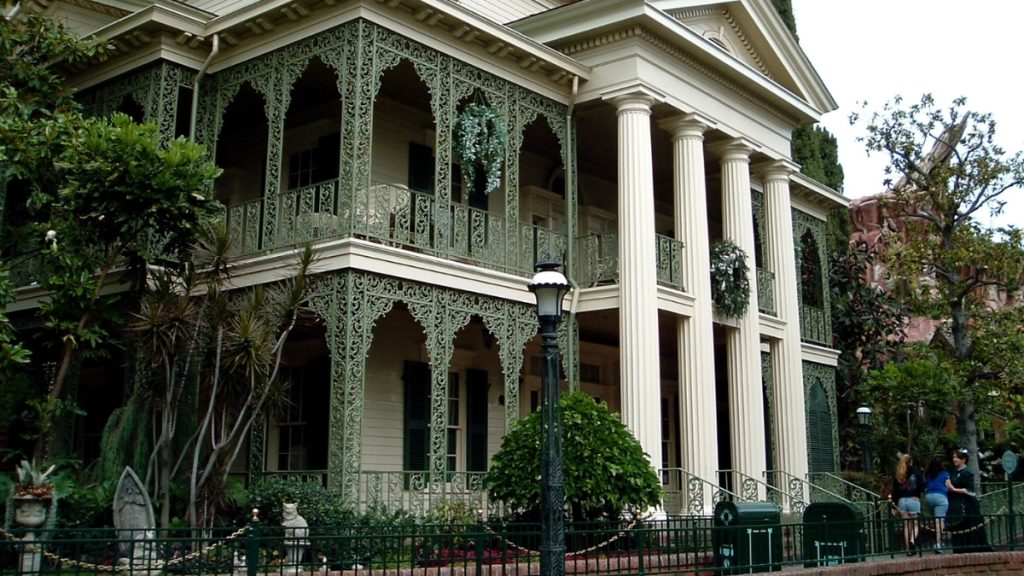
Growing Success and a Bigger Event
Thanks to the event’s early success, Little Monsters on Main Street grew in size. By 1991, the attendance cap had been raised to 2,000 kids, and Disneyland added more activities like magic shows and hayrides. They also extended the event’s hours, allowing kids to enjoy the festivities until 10:30 p.m.
In 2002, the event moved over to Disney California Adventure, where it could accommodate even more kids—up to 5,000 in its later years. The name was also shortened to just Little Monsters, since it was no longer held on Main Street. This safe, family-friendly Halloween event continued for several more years, with the last mention of Little Monsters appearing in the Disneyland employee newsletter in 2008. Though some Cast Members recall the event continuing until 2012, it eventually made way for Disney’s more public-facing Halloween events.
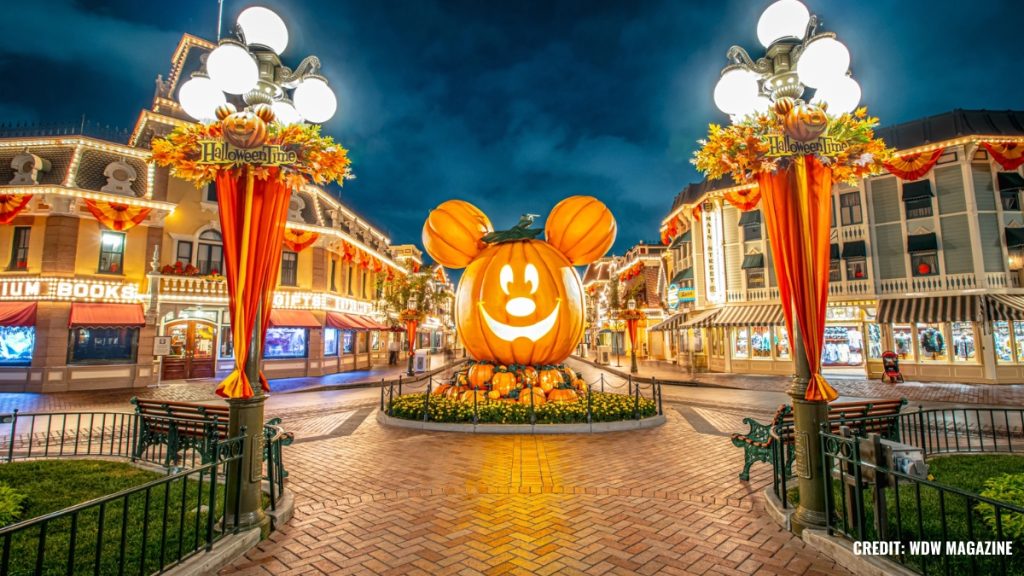
From Little Monsters to Mickey’s Not-So-Scary and Oogie Boogie Bash
Starting in the early 2000s, Disney began realizing the potential of Halloween-themed after-hours events for the general public. These early versions of Mickey’s Halloween Party and Mickey’s Halloween Treat eventually evolved into today’s Mickey’s Not-So-Scary Halloween Party and Oogie Boogie Bash. Unfortunately, this also marked the end of the intimate, Cast Member-exclusive Little Monsters event, but it paved the way for the large-scale Halloween celebrations we know and love today.
While it’s bittersweet to see Little Monsters on Main Street fade into Disney history, its legacy lives on through these modern Halloween parties. And even though Cast Members now receive discounted tickets to Mickey’s Not-So-Scary and Oogie Boogie Bash, the special charm of an event created specifically for Disney’s employees and their families remains something worth remembering.
The Merch: A Piece of Little Monsters History
For Disney collectors, the exclusive merchandise created for Little Monsters on Main Street is still out there. You can find pins, name tags, and themed pillowcases on sites like eBay. One of the coolest collectibles is a 1997 cloisonné pin set featuring Huey, Dewey, and Louie dressed as characters from Hercules. Other sets paid tribute to the Main Street Electrical Parade and Pocahontas, while the pillowcases were uniquely designed for each year of the event.
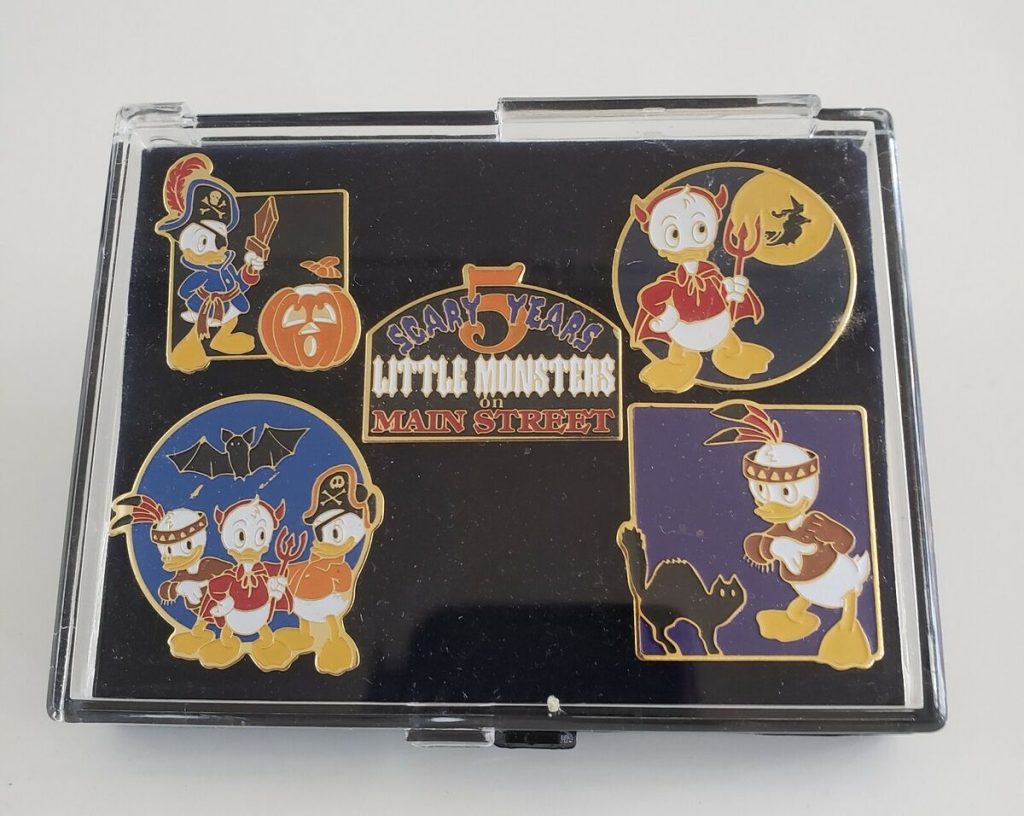
While Little Monsters on Main Street may be gone, it’s a fascinating piece of Disneyland history that played a huge role in shaping the Halloween celebrations we enjoy at Disney parks today.
Want to hear more behind-the-scenes stories like this? Be sure to check out I Want That Too, where Lauren and I dive deep into the history behind Disney’s most beloved attractions, events, and of course, merchandise!
Theme Parks & Themed Entertainment
The Story of Mickey’s Not-So-Scary Halloween Party: From One Night to a Halloween Family Tradition
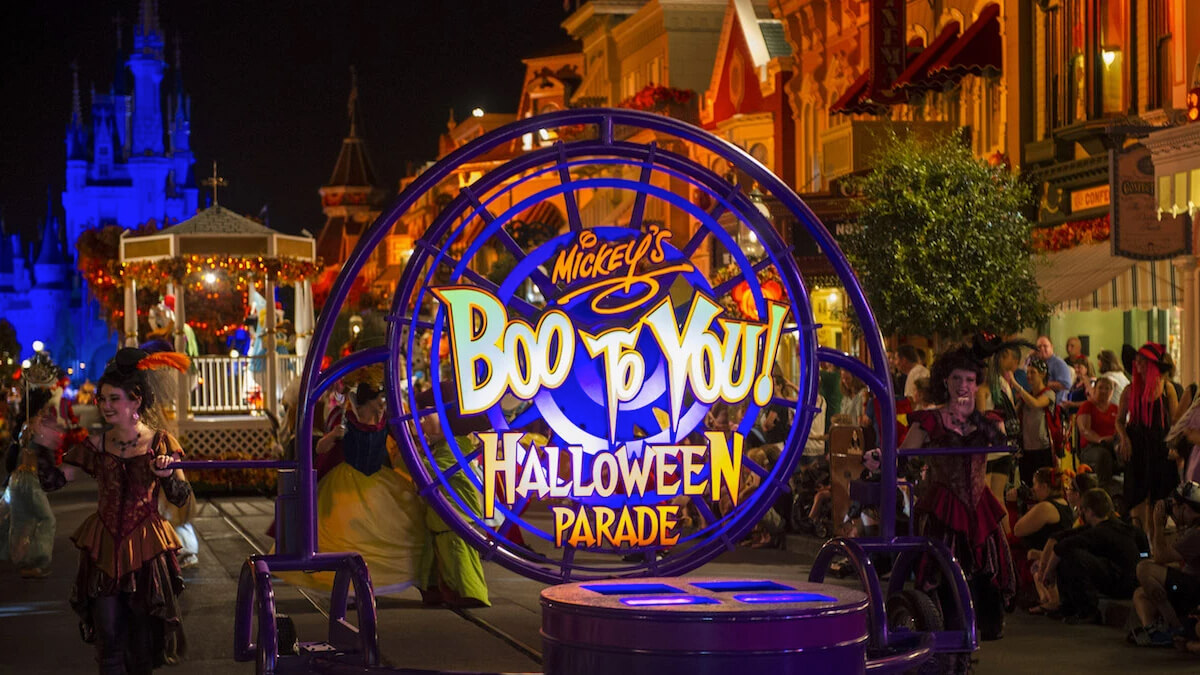
The spooky season is already in full swing at Disney parks on both coasts. On August 9th, the first of 38 Mickey’s Not-So-Scary Halloween Party (MNSSHP) nights for 2024 kicked off at Florida’s Magic Kingdom. Meanwhile, over at Disney California Adventure, the Oogie Boogie Bash began on August 23rd and is completely sold out across its 27 dates this year.
Looking back, it’s incredible to think about how these Halloween-themed events have grown. But for Disney, the idea of charging guests for Halloween fun wasn’t always a given. In fact, when the very first Mickey’s Not-So-Scary Halloween Party debuted on October 31, 1995, it was a modest one-night-only affair. Compare that to the near month-long festivities we see today, and it’s clear that Disney’s approach to Halloween has evolved considerably.
A Not-So-Scary Beginning
I was fortunate enough to attend that very first MNSSHP back in 1995, along with my then 18-month-old daughter Alice and her mom, Michelle. Tickets were a mere $16.95 (I know, can you imagine?), and we pushed Alice around in her sturdy Emmaljunga stroller—Swedish-built and about the size of a small car. Cast Members, charmed by her cuteness, absolutely loaded us up with candy. By the end of the night, we had about 30 pounds of fun-sized candy bars, making that push up to the monorail a bit more challenging.
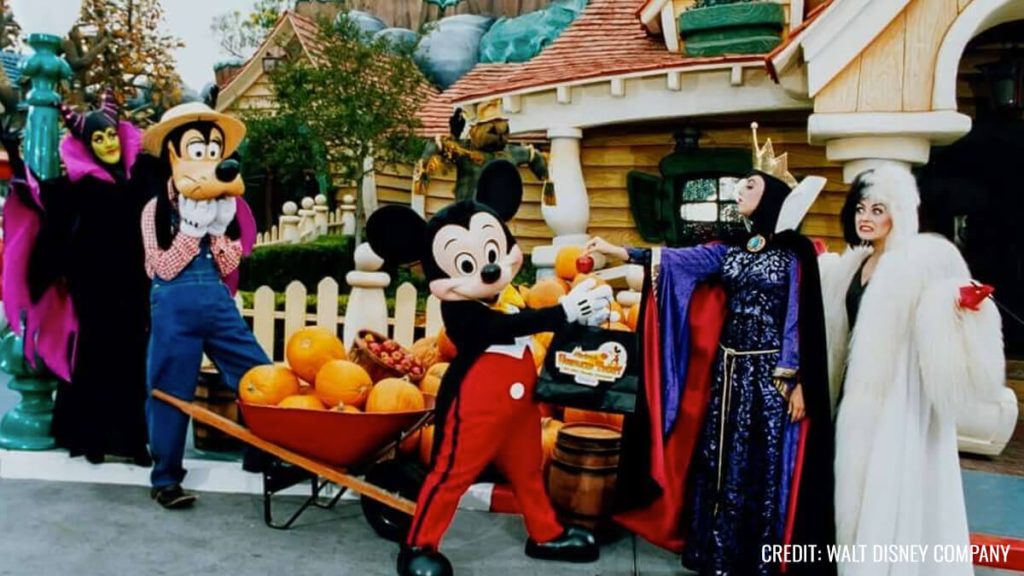
This Halloween event was Disney’s response to the growing popularity of Universal Studios Florida’s own Halloween hard ticket event, which started in 1991 as “Fright Nights” before being rebranded as “Halloween Horror Nights” the following year. Universal’s gamble on a horror-themed experience helped salvage what had been a shaky opening for their park, and by 1993, Halloween Horror Nights was a seven-night event, with ticket prices climbing as high as $35. Universal had stumbled upon a goldmine, and Disney took notice.
A Different Approach
Now, here’s where Disney’s unique strategy comes into play. While Universal embraced the gory, scare-filled world of horror, Disney knew that wasn’t their brand. Instead of competing directly with blood and jump-scares, Disney leaned into what they did best: creating magical, family-friendly experiences.
Thus, Mickey’s Not-So-Scary Halloween Party was born. The focus was on fun and whimsy, not fear. Families could bring their small children without worrying about them being terrified by a chainsaw-wielding maniac around the next corner. This event wasn’t just a Halloween party—it was an extension of the Disney magic that guests had come to expect from the parks.
Disney had some experience with seasonal after-hours events, most notably Mickey’s Very Merry Christmas Party, which had started in 1983. But the Halloween party was different, as the Magic Kingdom wasn’t yet decked out in Halloween decor the way it is today. Disney had to create a spooky (but not too spooky) atmosphere using temporary props, fog machines, and, of course, lots of candy.
A key addition to that first event? The debut of the Headless Horseman, who made his eerie appearance in Liberty Square, riding a massive black Percheron. It wasn’t as elaborate as the Boo-to-You Parade we see today, but it marked the beginning of a beloved Disney Halloween tradition.
A Modest Start but a Big Future
That first MNSSHP in 1995 was seen as a trial run. As Disney World spokesman Greg Albrecht told the Orlando Sentinel, “If it’s successful, we’ll do it again.” And while attendance was sparse that night, there was clearly potential. By 1997, the event expanded to two nights, and by 1999, Mickey’s Not-So-Scary Halloween Party had grown into a multi-night celebration with a full-fledged parade. Today, in 2024, it’s a staple of the fall season at Walt Disney World, offering 38 nights of trick-or-treating, character meet-and-greets, and special entertainment.
Universal’s Influence
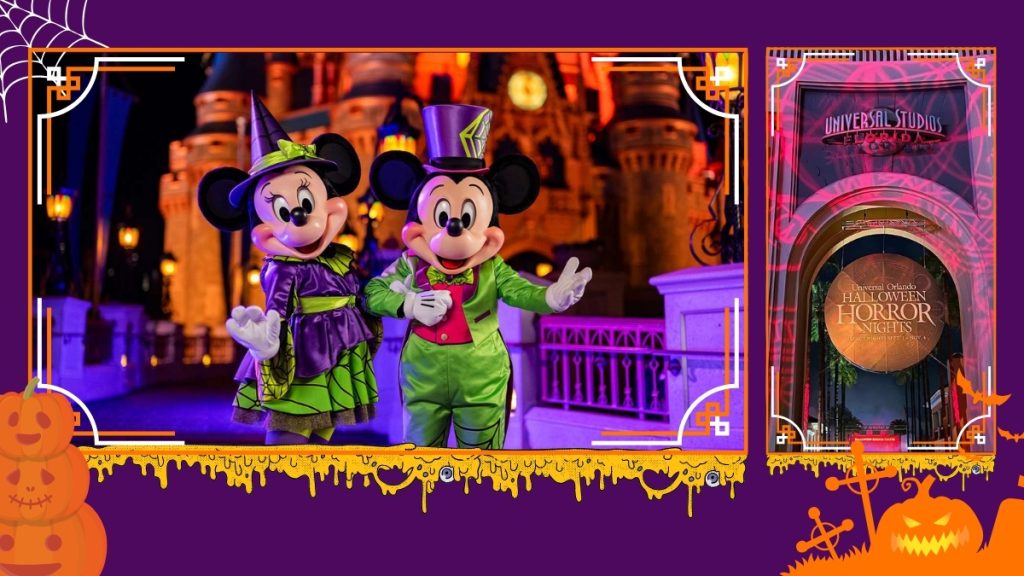
It’s interesting to reflect on how Disney’s Halloween event might never have existed without the competition from Universal. Just as “The Wizarding World of Harry Potter” forced Disney to step up their game with “Star Wars: Galaxy’s Edge,” Universal’s success with Halloween Horror Nights likely spurred Disney into action with MNSSHP. The friendly rivalry between the two parks has continually pushed both to offer more to their guests, and we’re all better off because of it.
So the next time you find yourself trick-or-treating through the Magic Kingdom, watching the Headless Horseman gallop by, or marveling at the seasonal fireworks, take a moment to appreciate how this delightful tradition came to be—all thanks to a little competition and Disney’s commitment to creating not-so-scary magic.
For more Disney history and behind-the-scenes stories, check out the latest episodes of the I Want That Too podcast on the Jim Hill Media network.
-

 History10 months ago
History10 months agoThe Evolution and History of Mickey’s ToonTown
-
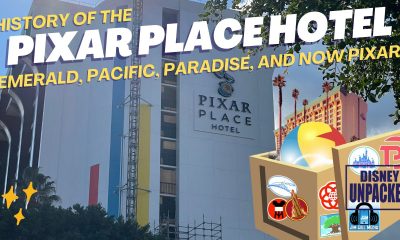
 History11 months ago
History11 months agoUnpacking the History of the Pixar Place Hotel
-
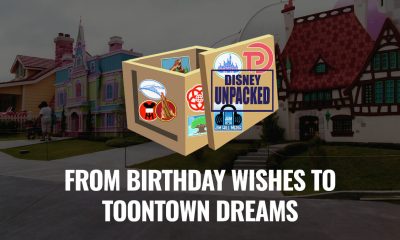
 History11 months ago
History11 months agoFrom Birthday Wishes to Toontown Dreams: How Toontown Came to Be
-
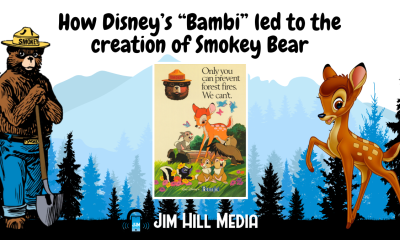
 Film & Movies8 months ago
Film & Movies8 months agoHow Disney’s “Bambi” led to the creation of Smokey Bear
-

 News & Press Releases10 months ago
News & Press Releases10 months agoNew Updates and Exclusive Content from Jim Hill Media: Disney, Universal, and More
-

 Merchandise8 months ago
Merchandise8 months agoIntroducing “I Want That Too” – The Ultimate Disney Merchandise Podcast
-

 Theme Parks & Themed Entertainment3 months ago
Theme Parks & Themed Entertainment3 months agoDisney’s Forgotten Halloween Event: The Original Little Monsters on Main Street
-
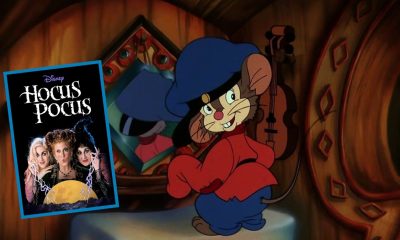
 Film & Movies3 months ago
Film & Movies3 months agoHow “An American Tail” Led to Disney’s “Hocus Pocus”

